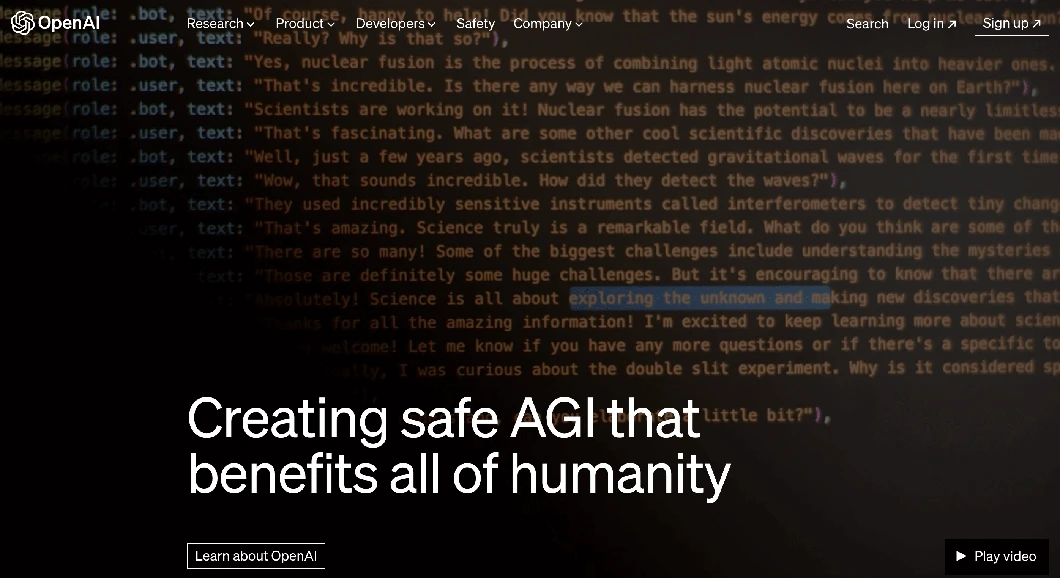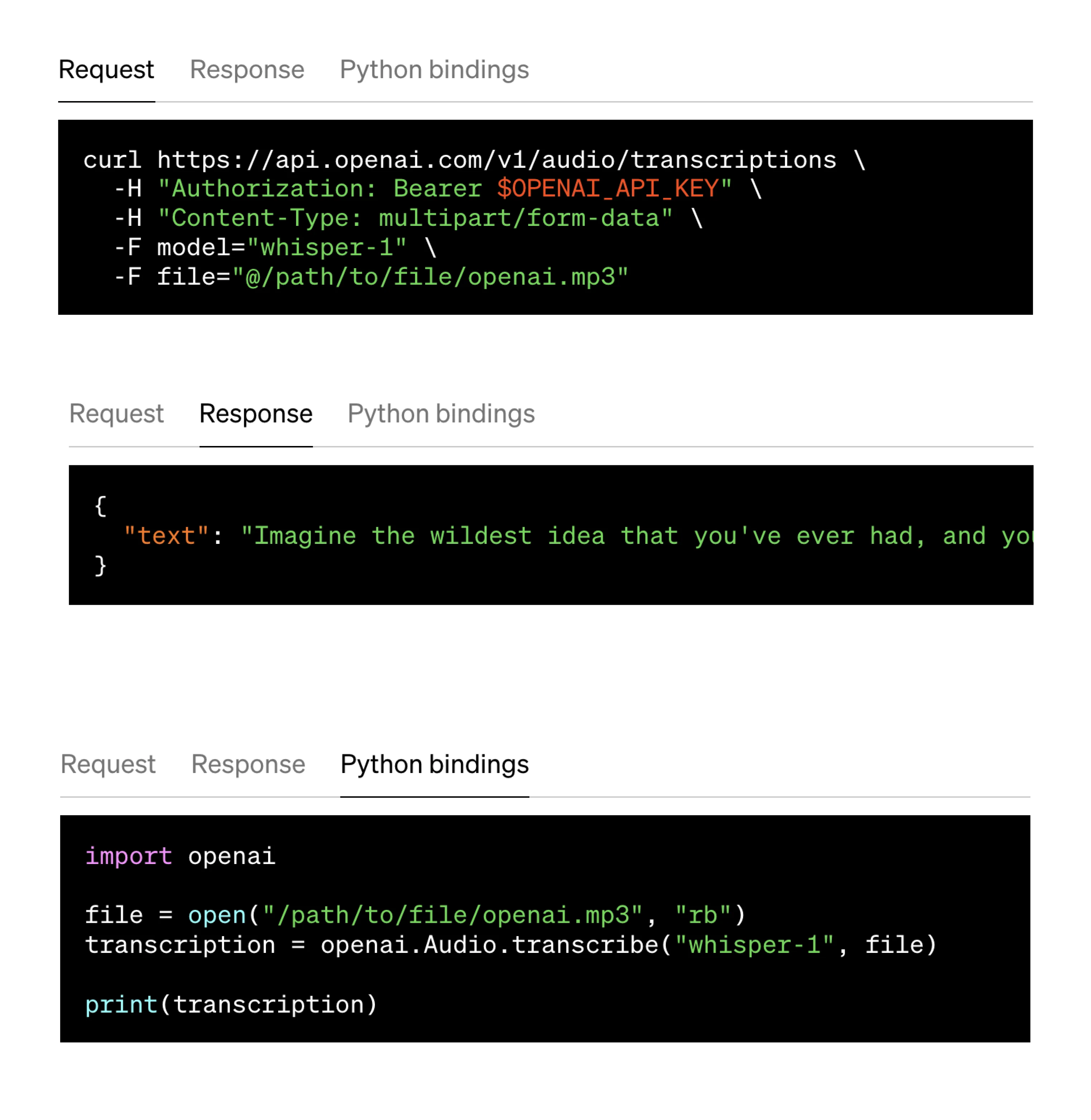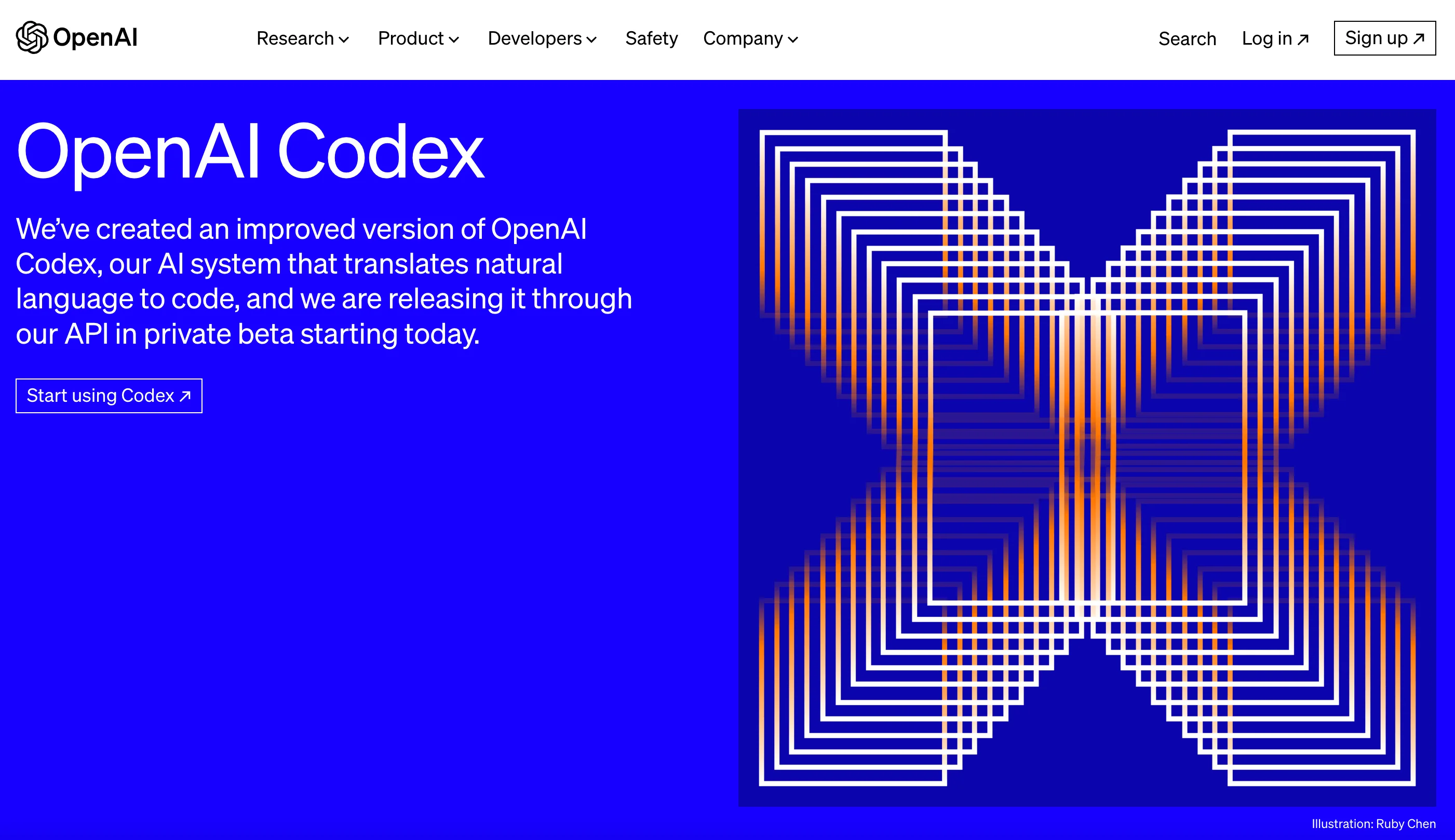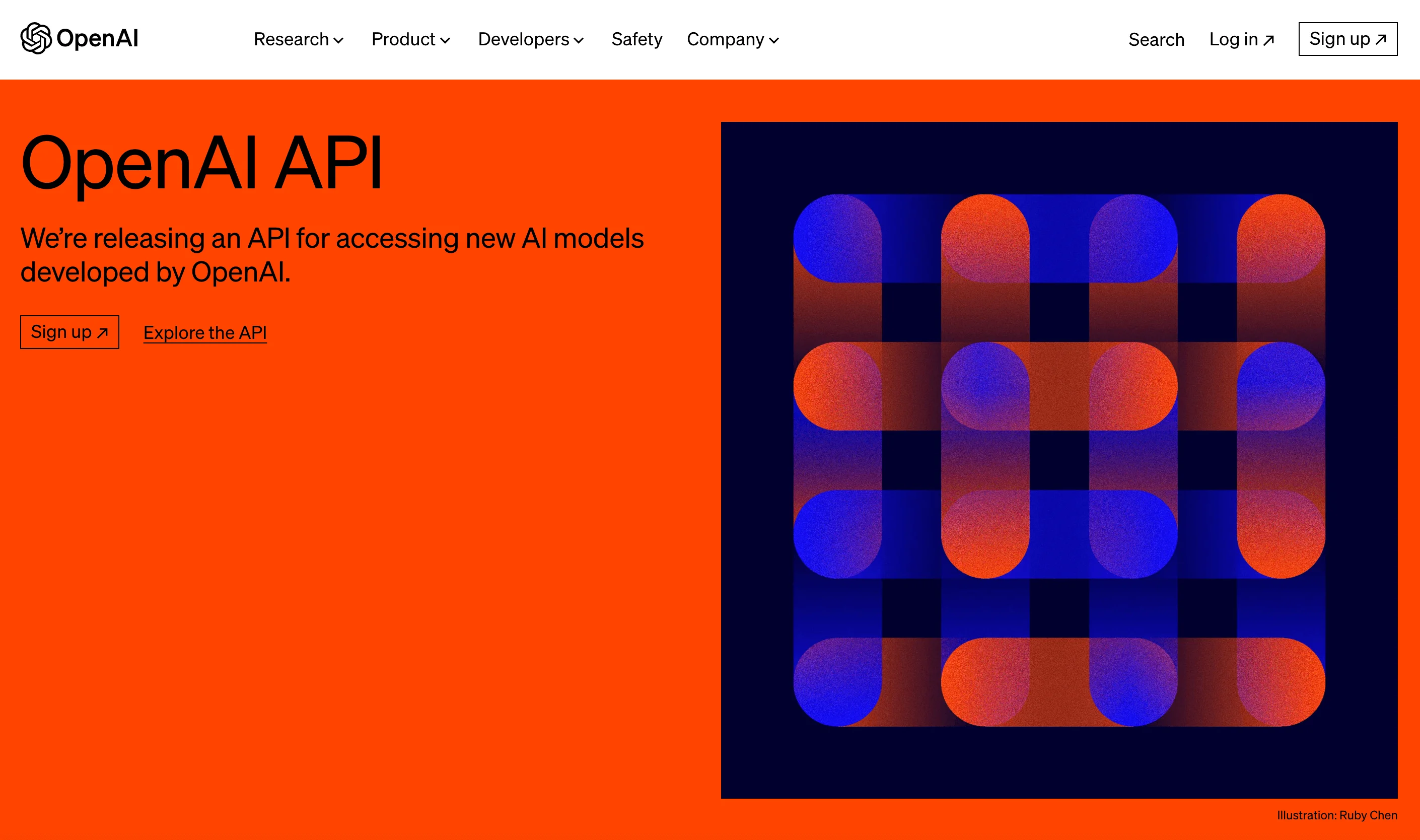OpenAI, a prominent American artificial intelligence research lab, is dedicated to shaping the future of AI through the development of Artificial General Intelligence (AGI). Their guiding principle is to ensure AGI development is both "safe and beneficial." For AGI, it means "highly autonomous systems that outperform humans at most economically valuable work.”
Today, OpenAI has achieved great success in the global AI field, producing breakthrough innovations including GPT-4, DALL-E, OpenAI Five, ChatGPT, and OpenAI Codex. In addition, Microsoft recognizes the potential of OpenAI's work and has invested heavily, providing $1 billion in 2019 and a further $10 billion in 2023, to advance research and innovation at OpenAI. The organization's commitment to safety and efforts to avoid harmful applications or undue concentration of power in AGI set it apart in the industry.
Website | https://openai.com/ |
|---|---|
Founded | December 11, 2015 |
Major Team Members | Sam Altman, Elon Musk, Ilya Sutskever, Greg Brockman, Trevor Blackwell, Vicki Cheung, Andrej Karpathy, Durk Kingma, Jessica Livingston, John Schulman, Pamela Vagata, and Wojciech Zaremba |
Repository | https://github.com/openai/ |

Key Contributions and Innovations from OpenAI
Absolutely, OpenAI has indeed contributed some significant tools and technologies to the AI world. Here are the major products and technologies developed by OpenAI:
GPT model
Timeline of Key Developments:
June 16, 2016 - OpenAI published research on generative models, which are trained by collecting a large amount of data in a specific domain and teaching the model to generate similar data.
September 19, 2019 - OpenAI published research on fine-tuning the GPT-2 language model with human preferences and feedback.
January 27, 2022 - OpenAI published research on InstructGPT models, the siblings of ChatGPT. These models show improved instruction-following ability, reduced fabrication of facts, and decreased toxic output.
November 30, 2022 - OpenAI introduced ChatGPT using GPT-3.5 as a part of a free research preview.
March 14, 2023 - OpenAI released GPT-4 in ChatGPT and Bing, promising better reliability, creativity, and problem-solving skills.
GPT-3
The GPT-3 (Generative Pretrained Transformer 3) is a groundbreaking AI model that leverages machine learning techniques to generate human-like text. This technology uses a language prediction model that utilizes the Transformer architecture. GPT-3 has 175 billion machine-learning parameters, which help train its ability to predict the likelihood of a word based on previous words used in the text. Ultimately, it can generate impressively coherent and context-relevant sentences.
Moreover, GPT-3 is fine-tuned using Human Feedback Reinforcement Learning (RLHF). This approach is a milestone in artificial intelligence, as it enables the creation of more advanced artificial intelligence models and is widely used as the underlying technology of various OpenAI models.
GPT-3.5
Released on March 1, 2023, GPT-3.5 is an enhanced version of GPT-3 because it has a set of advanced models that are proficient at understanding and generating natural language or code. GPT-3.5 has five different model variants, each with specialized capabilities. Four of them are specifically optimized for text completion tasks, and the remaining one has better performance in code completion tasks.

GPT-4
The GPT-4 model represents a new era in AI language models. It enhances the strengths of its predecessors, GPT-3 and GPT-3.5 while addressing its shortcomings. GPT-4 has been further fine-tuned to improve instruction-following ability, reduce the fabrication of facts, and decrease toxic output, making it more reliable and creative.
OpenAI's release of GPT-4 marked a milestone in ChatGPT's evolution, elevating its abilities to interpret and generate text with better contextual understanding and problem-solving skills. As the largest and most advanced model, GPT-4 has set the bar higher for future AI developments.

ChatGPT
ChatGPT is an advanced language model that mirrors human-like text generation in a conversational manner. Built upon the GPT-3 model, ChatGPT is specifically engineered to generate interactive responses to user inputs. With its ability to address follow-up queries, rectify mistakes, challenge fallacies, and refuse unsuitable requests, ChatGPT demonstrates a high degree of sophistication in dialogue engagement.
Fine-tuning
OpenAI's fine-tuning technique provides a way to extract optimal performance from AI models.
Its features include:
Enhanced result quality,
The capacity for training on a larger number of examples,
Use shorter prompts to save token usages,
and process requests at a quicker speed.
It works by training a pre-trained model like GPT-3 on a larger dataset than can be accommodated within a prompt, which helps improve model performance across various tasks.
Embeddings
Embeddings in OpenAI's context are measures of the relatedness of text strings. Such embeddings find extensive use in diverse areas like search operations, clustering, recommendations, anomaly detection, diversity measurement, and classification. The relatedness is captured in the form of vectors, with the distance between two vectors indicating their level of similarity.
Whisper
Whisper is a remarkable automatic speech recognition system that processes words collected from an extensive multilingual and multitasks training dataset. Whisper excels at handling different accents, technical language, and background noise with higher accuracy, which is excellent for English speech recognition. It’s super popular in the developer community. Also, you can use Whisper API.

DALL-E 2/Image generation
DALL-E 2, another impressive AI system from OpenAI, can generate realistic images and artwork based on natural language descriptions. Whether it's about creating original images, expanding existing ones, making realistic edits, or generating different variations of a given image, DALL-E 2 handles it all with the help of deep learning models.

Codex
OpenAI Codex translates natural language into code, aiding developers in their programming tasks. It supports multiple programming languages and understands and executes simple commands, thereby facilitating the creation of natural language interfaces for existing applications. Codex, the underlying model for GitHub Copilot, is an evolution of GPT-3 and utilizes a mix of natural language and billions of lines of source code for its training.

OpenAI API
OpenAI API is a cloud interface. Hosted on Microsoft Azure, you can access new AI models developed by OpenAI, such as DALL-E, Codex, and GPT-3, once OpenAI releases the model API.
Unlike most AI systems designed for a single use case, today's APIs provide a generic "text in, text out" interface, allowing users to try it on almost any English language task.
How to use it? Simply request access to integrate the API into your product, and then you can develop a brand-new application—for example, an image generator based on OpenAI's API.

OpenAI Model Pricing
Below is an outline of the pricing structure for various models developed by OpenAI:
Language models
OpenAI offers several language models with unique capabilities and varying price points. Prices are listed per 1,000 tokens, roughly 750 words.
GPT-4
Model | Input Cost | Output Cost |
|---|---|---|
8K context | $0.03 / 1K tokens | $0.06 / 1K tokens |
32K context | $0.06 / 1K tokens | $0.12 / 1K tokens |
GPT-3.5 Turbo
Model | Input Cost | Output Cost |
|---|---|---|
4K context | $0.0015 / 1K tokens | $0.002/ 1K tokens |
16K context | $0.003/ 1K tokens | $0.004 / 1K tokens |
Fine-tuning Models
Model | Training Cost | Usage Cost |
|---|---|---|
Ada | $0.0004 / 1K tokens | $0.0016/ 1K tokens |
Babbage | $0.0006/ 1K tokens | $0.0024 / 1K tokens |
Curie | $0.0030 / 1K tokens | $0.0120 / 1K tokens |
Davinci | $0.0300 / 1K tokens | $0.1200 / 1K tokens |
Embedding Models
Model | Usage Cost |
|---|---|
Usage context | $0.0001 / 1K tokens |
Image Models
OpenAI's image models, like DALL·E, can be built directly into applications to generate and edit novel images and art. These models offer three tiers of resolution for flexibility.
Resolution | Price |
|---|---|
1024×1024 | $0.020 / image |
512×512 | $0.018 / image |
256×256 | $0.016 / image |
Audio Models
Model | Usage Cost |
|---|---|
Whisper | $0.006 / minute (rounded to the nearest second) |
OpenAI's Distinguished Customers
OpenAI's groundbreaking technology has found application across various industries and sectors. Here's a brief overview of how some of our esteemed customers have leveraged the capabilities of our AI models:
Morgan Stanley
Morgan Stanley's wealth management sector harnesses the power of GPT-4 to organize its extensive knowledge base, enhancing efficiency and client service.
Stripe
Stripe employs GPT-4 to optimize its user experience and combat fraudulent activities, ensuring secure and seamless transactions for all its users.
Government of Iceland
In a unique application of AI, the Government of Iceland is using GPT-4 to preserve the rich heritage of its language, ensuring its culture and traditions are carried forward into the digital age.
Khan Academy
Khan Academy is venturing into the world of AI with a limited pilot program exploring the potential applications of GPT-4 in reshaping online learning and tutoring.
Duolingo
Duolingo enhances its language learning platform by incorporating GPT-4, deepening conversation practice, and improving users' language skills.